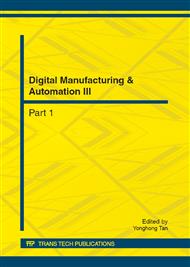p.360
p.364
p.369
p.373
p.381
p.385
p.390
p.395
p.401
Finite Element Model Simplification for the Stator Component in the Hydraulic-Bulging Assembly Process Simulation
Abstract:
In this paper, the hydraulic-bulging assembly process for the stator and can is simulated by using ABAQUS/Explicit. Five different models of the stator and can component were developed. The processing parameters are analyzed and compared based on the simulation results. The simplified model with higher precision and less computational time is attained and will be used in the future process optimization.
Info:
Periodical:
Pages:
381-384
Citation:
Online since:
July 2012
Authors:
Price:
Сopyright:
© 2012 Trans Tech Publications Ltd. All Rights Reserved
Share:
Citation:


